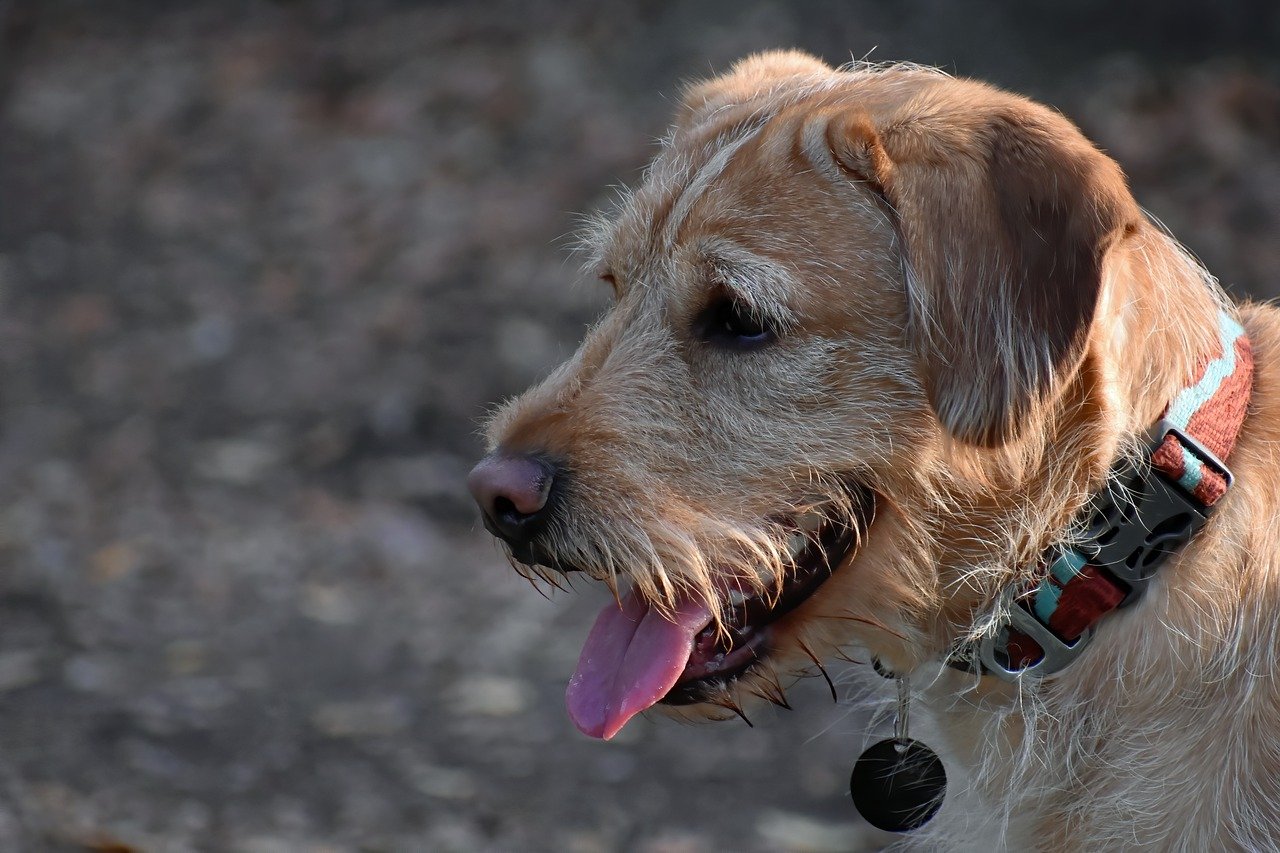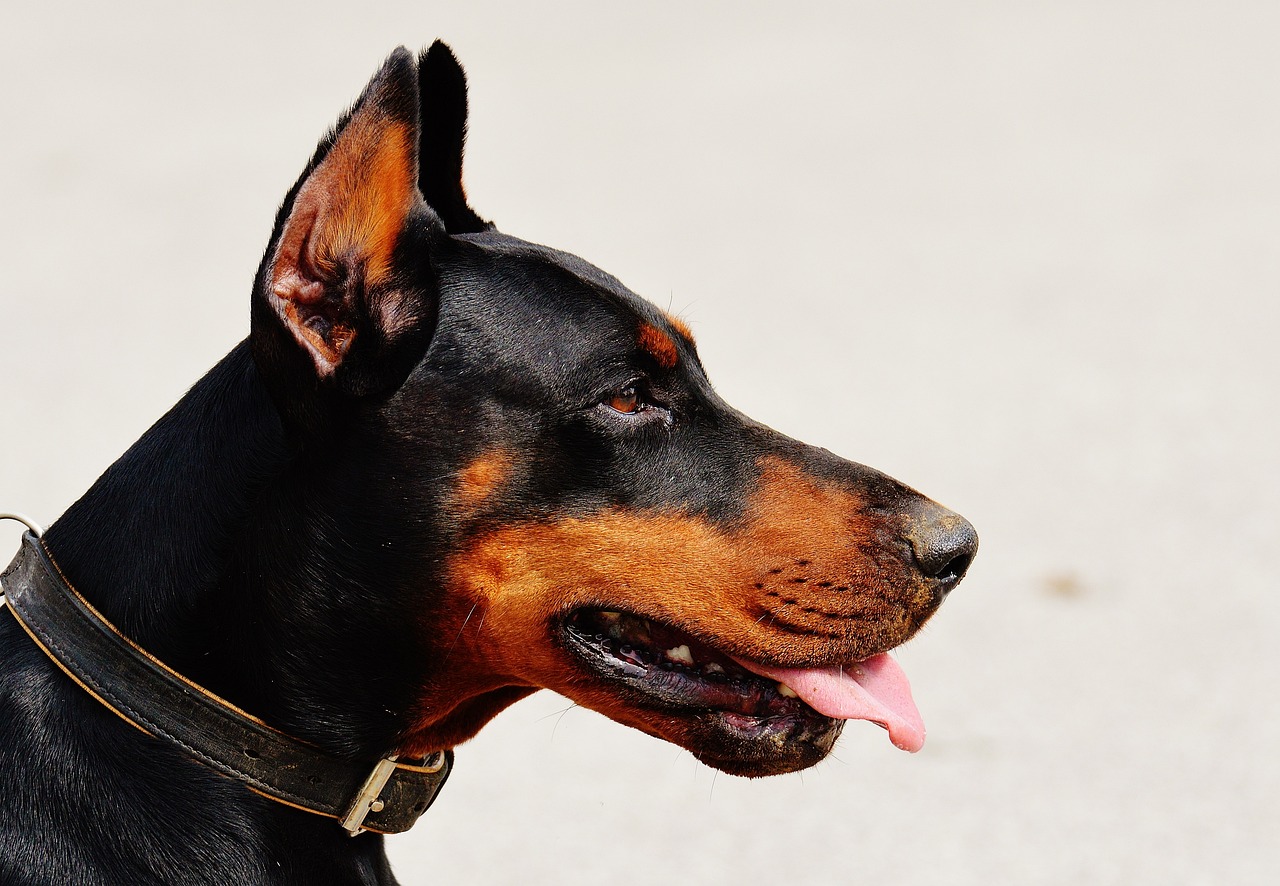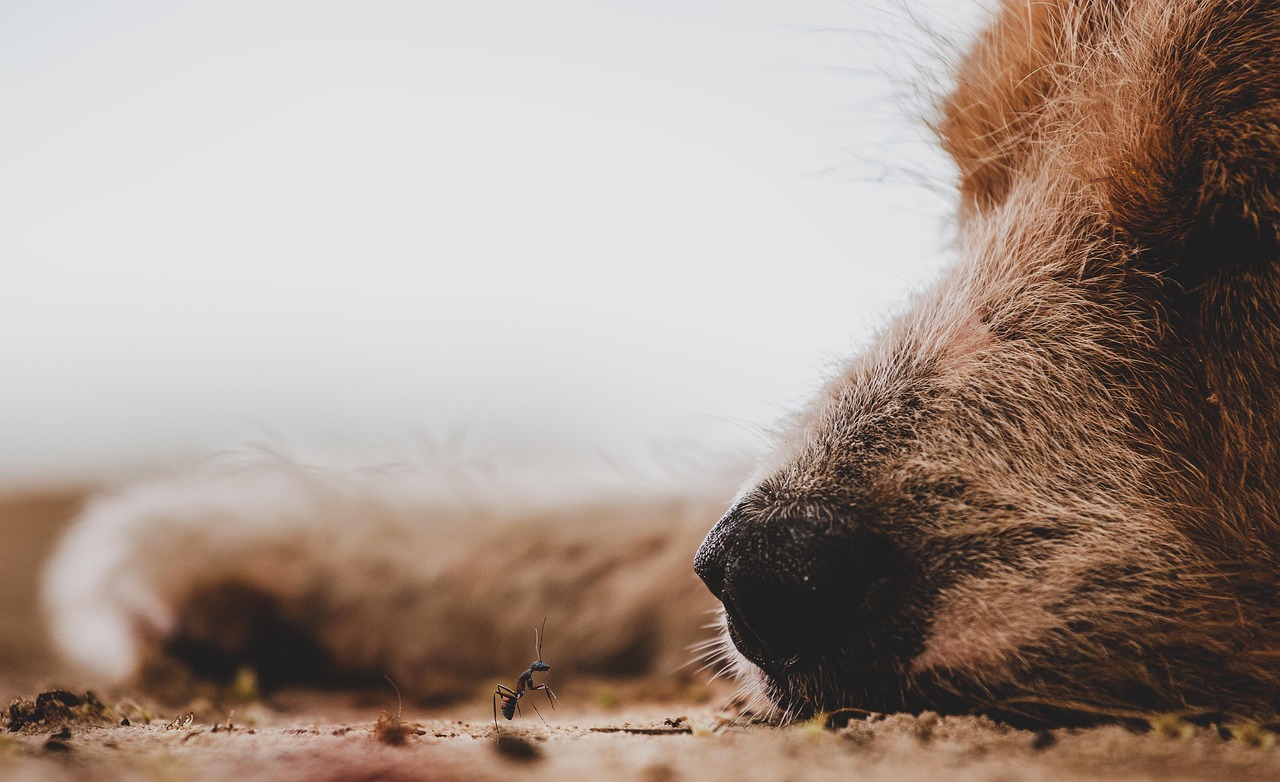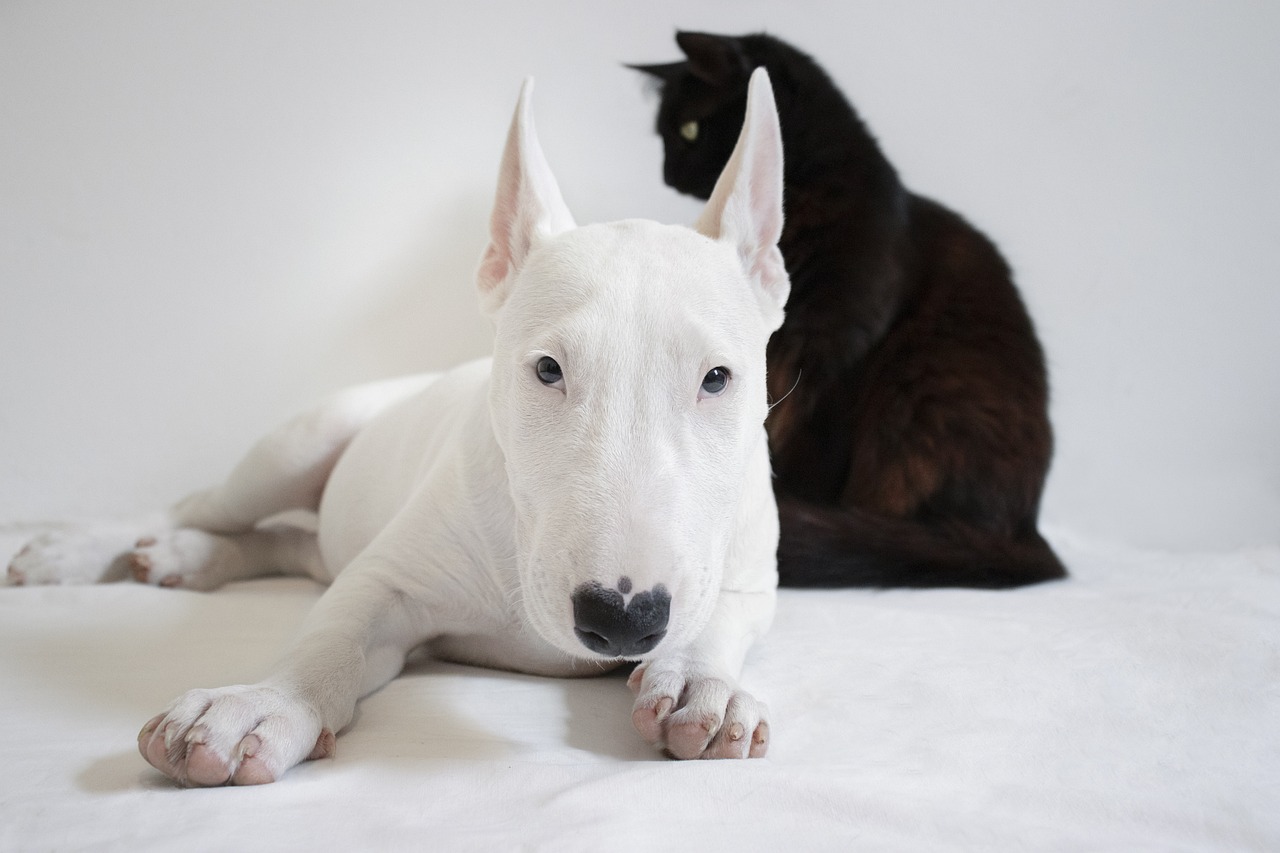A Guide to Small Dog Breeds for Apartment Living
Are you living in an apartment and dreaming of having a furry friend by your side? If so, you’re not alone! Many city dwellers find joy in sharing their homes with small dog breeds, which can be the perfect companions for compact living spaces. This article explores the best small dog breeds suited for apartment living, highlighting their traits, care requirements, and tips for choosing the right companion for your unique lifestyle.
Small dog breeds offer numerous advantages for apartment dwellers. First and foremost, they have lower space requirements, making them ideal for cozy living environments. Imagine a little pup curled up in your lap while you binge-watch your favorite series on the couch! Additionally, small dogs are generally easier to maintain, requiring less food and fewer resources than their larger counterparts. Their ability to adapt to smaller living environments means they can thrive in apartments without feeling cramped or confined. Plus, they often have a lower energy level, which can be a blessing for those who prefer a quieter home life. In short, small dogs are tailor-made for city living!
When it comes to selecting the perfect small dog for apartment living, several breeds stand out. Each one has its unique personality and requirements, ensuring that there’s a match for every lifestyle. Let’s take a closer look at a couple of popular choices:
The French Bulldog is a charming breed known for its affectionate nature and minimal exercise needs. With their adorable bat-like ears and compact size, they are often considered the epitome of apartment dogs. These little companions thrive on love and attention, making them perfect for individuals or families looking for a loyal friend. French Bulldogs enjoy short walks and playtime but are just as happy lounging on the couch. Their friendly disposition makes them excellent for socializing with neighbors and other pets.
Another fantastic option is the Cavalier King Charles Spaniel. This breed is friendly, adaptable, and loves to be around people. They enjoy both playtime and relaxation, making them a versatile choice for various lifestyles. Their moderate exercise requirements mean they can be entertained with short walks and indoor play. Plus, their sweet and gentle nature makes them a hit with families, singles, and seniors alike. Imagine coming home to a wagging tail and a warm cuddle session after a long day!
Understanding the exercise requirements of small dog breeds is crucial for their well-being. While they may be smaller in size, they still need regular physical activity to stay healthy and happy. So, how much exercise do they really need? Generally, small dogs require about 30 minutes to an hour of exercise each day, which can include walks, playtime, and mental stimulation. But don’t worry; keeping them active in an apartment can be creative and fun!
Regular walks are essential for small dogs to maintain their physical and mental health. Incorporating daily walks into your routine doesn’t have to be a chore. Think of it as a chance to bond with your furry friend and explore your neighborhood together. Try to set a consistent schedule, perhaps taking a stroll in the morning and another in the evening. This routine not only keeps your pup fit but also allows them to socialize with other dogs and people.
When outdoor space is limited, indoor activities can help stimulate small dogs. Here are a few engaging games to keep your dog entertained at home:
- Hide and Seek: Hide somewhere in your apartment and call your dog to find you. It’s a fun way to engage their senses!
- Interactive Toys: Invest in puzzle toys that challenge your dog mentally and keep them occupied.
- Training Sessions: Teach new tricks or commands. It’s a great way to bond and mentally stimulate your dog.
Proper grooming and care are vital for small dog breeds. Depending on the breed, grooming needs can vary significantly. Regular grooming helps maintain a healthy coat and prevents matting, especially for breeds with longer hair. Additionally, monitoring their health is essential, as small dogs can be prone to certain health issues. Make sure to schedule regular vet check-ups to catch any potential problems early.
Different breeds have varying grooming needs. For example, a French Bulldog has a short coat that requires minimal grooming, while a Cavalier King Charles Spaniel may need more frequent brushing to keep their luxurious fur in check. Generally, aim to groom your dog every few weeks, but always pay attention to their specific needs. Keeping their coat healthy not only looks good but also feels great for your pup!
Regular health check-ups are essential for small dogs. Keep an eye out for common issues that may arise in apartment living, such as dental problems or obesity due to a sedentary lifestyle. Recognizing these concerns early can help you manage their health effectively. Remember, a happy dog is a healthy dog, so keep those vet appointments and watch for any signs of discomfort.
1. What are the best small dog breeds for apartments?
Some of the best small dog breeds for apartments include the French Bulldog, Cavalier King Charles Spaniel, Pug, and Dachshund. These breeds adapt well to smaller living spaces and have moderate exercise needs.
2. How much exercise do small dogs need?
Most small dogs require about 30 minutes to an hour of exercise each day, which can be broken up into walks and playtime.
3. How often should I groom my small dog?
Grooming frequency depends on the breed. Short-haired breeds may need grooming every few weeks, while long-haired breeds may require more frequent brushing to avoid matting.
4. Are small dogs good for families?
Yes! Many small dog breeds are great for families, as they tend to be friendly and adaptable. Just be sure to choose a breed that matches your family’s lifestyle.

Benefits of Small Dog Breeds
When it comes to apartment living, small dog breeds are like the perfect little puzzle pieces that fit seamlessly into your lifestyle. Imagine having a furry friend that not only brightens your day but also adapts effortlessly to your cozy living space. One of the biggest advantages of small dog breeds is their lower space requirements. Unlike larger breeds that need sprawling backyards to romp around, small dogs can thrive in compact areas, making them ideal for city dwellers.
Moreover, small dogs often require less maintenance in terms of grooming and feeding. Their smaller size means they eat less, which can save you money in the long run. Plus, many small breeds have shorter coats, which can mean less shedding and fewer trips to the groomer. This can be a huge relief for busy individuals or families who may not have the time to dedicate to extensive grooming sessions.
Another significant benefit is their adaptability. Small dogs are generally more flexible when it comes to adjusting to new environments. Whether you’re moving from a house to an apartment or simply rearranging your furniture, your small dog is likely to take it all in stride. They can be your perfect companions during those bustling city days, adapting to your lifestyle while providing unwavering loyalty and affection.
Let’s not forget the social aspect. Small dogs are often more approachable, making it easier to connect with other dog owners in your apartment complex or neighborhood. Their size allows them to mingle comfortably in crowded spaces, whether it's a dog park or a small gathering. Having a small dog can lead to new friendships and social opportunities, enriching your life in ways you might not expect.
In summary, the benefits of small dog breeds for apartment living are numerous:
- Lower space requirements make them ideal for smaller homes.
- Less maintenance in grooming and feeding saves time and money.
- High adaptability to various living conditions enhances their suitability.
- Encourages social interactions with fellow dog lovers.
With all these advantages, it’s no wonder small dog breeds are becoming increasingly popular among apartment dwellers. They not only fit into your living space but also fit into your life, bringing joy and companionship along the way.

Top Small Dog Breeds for Apartments
When it comes to choosing a furry friend for your apartment, small dog breeds are often the best choice. They not only fit comfortably in smaller spaces, but they also bring a wealth of personality and charm to your home. Let’s dive into some of the most popular small dog breeds that thrive in apartment living, focusing on their unique traits and what makes them suitable for your lifestyle.
The French Bulldog is a standout choice for apartment dwellers. With their adorable bat-like ears and compact size, these pups are known for their affectionate nature. They require minimal exercise, making them perfect for those busy urban lifestyles. A couple of short walks a day and some playtime indoors will keep them happy and healthy. Plus, their friendly disposition makes them excellent companions for both singles and families.
Next up is the Cavalier King Charles Spaniel. This breed is the embodiment of friendliness and adaptability. They thrive on companionship, whether it’s playing fetch in the living room or curling up on your lap during a movie night. Their moderate exercise needs mean a few walks and some playtime will suffice, fitting seamlessly into your busy schedule. With their loving nature and gentle temperament, Cavaliers are great for families with children as well as older adults looking for a loyal friend.
Another fantastic option is the Shih Tzu. Known for their luxurious coats and cute faces, Shih Tzus are small yet sturdy dogs that adapt well to apartment living. They enjoy short walks and indoor playtime, which makes them perfect for smaller spaces. Their friendly, outgoing personalities make them a hit with neighbors and guests alike. Just remember, they do require regular grooming to keep their coats looking fabulous!
The Pug is a breed that brings a smile to anyone's face. With their wrinkled faces and playful spirit, Pugs are known for their affectionate nature and adaptability. They are content with moderate exercise, making them ideal for apartment life. A few short walks and some indoor playtime will keep them entertained. Their charming personality and love for human companionship make them a wonderful addition to any household.
Finally, let’s talk about the Boston Terrier. These little bundles of energy are friendly, intelligent, and make great companions for apartment living. Boston Terriers are known for their playful demeanor and love for social interactions. They require regular exercise, but their moderate size means they can get plenty of activity indoors or in small outdoor spaces. Their short coat also makes grooming a breeze, allowing you to spend more time enjoying their company.
In summary, when selecting a small dog breed for your apartment, consider their exercise needs, grooming requirements, and how well they fit into your lifestyle. Each of these breeds offers unique traits that can enhance your living experience. With the right match, you’ll find that your small dog can bring a big dose of joy and companionship to your urban life.
| Breed | Exercise Needs | Grooming | Temperament |
|---|---|---|---|
| French Bulldog | Minimal | Low | Affectionate |
| Cavalier King Charles Spaniel | Moderate | Moderate | Friendly |
| Shih Tzu | Moderate | High | Outgoing |
| Pug | Moderate | Low | Playful |
| Boston Terrier | Moderate | Low | Intelligent |
French Bulldog
The is not just a pet; it's a delightful companion that brings joy and warmth to any apartment. With their adorable bat-like ears and compact size, these dogs are the epitome of charm. They typically weigh between 16 to 28 pounds, making them a perfect fit for smaller living spaces. Their affectionate nature means they thrive on human interaction, and they are known to form strong bonds with their owners. But what really makes the French Bulldog stand out is their laid-back attitude. Unlike some high-energy breeds, they require only moderate exercise, making them ideal for those who may not have the time or space for long walks.
French Bulldogs are often described as adaptable and easygoing, which is a huge plus for apartment living. They don't need a backyard to run around in; a few short walks and some playtime indoors can keep them happy and healthy. Their playful yet calm demeanor makes them suitable for families, singles, and seniors alike. Imagine coming home after a long day, and there they are, ready to greet you with their endearing little wiggle and a face full of love!
However, it's important to note that French Bulldogs do have some specific care needs. Their short snouts can lead to breathing issues, especially in hot weather. Therefore, it's essential to keep them cool and avoid strenuous exercise during the heat of the day. Additionally, their skin folds require regular cleaning to prevent infections. With a bit of attention to these details, your Frenchie can lead a healthy, happy life in your cozy apartment.
In summary, if you're looking for a small dog that combines affection, adaptability, and a low exercise requirement, the French Bulldog might just be your perfect match. They make great companions, and their charming personalities will undoubtedly light up your apartment!
1. Are French Bulldogs good for first-time dog owners?
Yes, their friendly nature and moderate exercise needs make them an excellent choice for first-time dog owners.
2. How much exercise do French Bulldogs need?
They require about 30 minutes of exercise daily, which can be split into short walks and playtime.
3. Do French Bulldogs shed a lot?
They do shed, but their short coat is relatively easy to manage with regular grooming.
4. Are French Bulldogs prone to any health issues?
Yes, they can be prone to breathing problems, hip dysplasia, and skin conditions. Regular vet check-ups are essential.
Cavalier King Charles Spaniel
The is a delightful little companion that brings a touch of royal charm to any apartment. Known for their friendly disposition and affectionate nature, these dogs thrive on human interaction and are perfect for families, singles, or seniors alike. Their gentle temperament makes them great with children and other pets, creating a warm and loving environment in your home.
One of the standout features of the Cavalier King Charles Spaniel is their adaptability. Whether you live in a bustling city or a quieter suburb, they can easily adjust to your lifestyle. Unlike some breeds that require extensive exercise, Cavaliers have moderate exercise needs. A couple of short walks each day, combined with playtime indoors, is usually sufficient to keep them happy and healthy. Imagine your cozy apartment filled with the sound of your Cavalier’s playful barks as they chase after a toy or cuddle up next to you on the couch. It's like having a little bundle of joy that fits perfectly into your life!
When it comes to grooming, Cavaliers do require a bit more attention than some other small breeds due to their beautiful, silky coats. Regular brushing, ideally a few times a week, helps prevent matting and keeps their fur looking pristine. Additionally, you’ll want to schedule routine visits to the groomer and keep an eye on their ears, as they can be prone to ear infections. Think of grooming not just as a chore but as a bonding experience—your Cavalier will love the attention!
Health-wise, it’s essential to be proactive. Cavaliers are generally healthy, but like many breeds, they can be susceptible to certain conditions such as heart disease and hip dysplasia. Regular vet check-ups will help catch any potential issues early on, ensuring your furry friend has a long and happy life. After all, the last thing you want is to see your beloved companion in discomfort.
In conclusion, the Cavalier King Charles Spaniel is an excellent choice for apartment living. Their loving nature, moderate exercise needs, and adaptability make them a perfect fit for various lifestyles. With a little care and attention, you’ll find that they not only thrive in your home but also enrich your life in ways you never imagined.
- How much exercise does a Cavalier King Charles Spaniel need? Generally, they require about 30 minutes of exercise each day, which can be broken down into short walks and play sessions.
- Are Cavaliers good with children? Yes! Their gentle nature makes them excellent companions for children, but supervision is always recommended.
- Do they shed a lot? Cavaliers do shed, especially during seasonal changes, so regular grooming is essential to manage their coat.
- How often should I take my Cavalier to the vet? Regular check-ups every 6 to 12 months are recommended to monitor their health and catch any potential issues early.

Exercise Needs for Small Dogs
Understanding the exercise requirements of small dog breeds is crucial for their overall well-being and happiness. Just like us, dogs need to stretch their legs and get their hearts pumping, especially when they’re living in a cozy apartment. But don’t worry—keeping your pint-sized pooch active doesn’t have to be a daunting task! With a bit of creativity and commitment, you can ensure your furry friend gets all the exercise they need.
Small dogs typically require less exercise than larger breeds, but they still thrive on regular physical activity. Most small dogs need about 30 minutes to 1 hour of exercise each day, which can be broken down into several short walks or play sessions. This not only helps them stay fit but also prevents behavioral issues that can arise from boredom or pent-up energy.
When it comes to exercise, you have a variety of options to keep your small dog engaged. Daily walks are essential, but they don’t have to be long or strenuous. A simple stroll around your neighborhood or a trip to a nearby park can be invigorating for both you and your furry companion. Additionally, consider incorporating playtime into your routine. Games like fetch, tug-of-war, or even hide-and-seek can provide excellent exercise without requiring a large space. Here’s a quick breakdown of some effective activities:
| Activity | Duration | Benefits |
|---|---|---|
| Daily Walks | 20-30 mins | Physical exercise, mental stimulation, socialization |
| Playtime | 15-30 mins | Bonding, energy release, fun |
| Training Sessions | 10-15 mins | Mental exercise, obedience, focus |
Another important aspect of exercising small dogs is keeping it fun and varied. Just like humans, dogs can get bored with the same routine day in and day out. Mix things up by exploring new walking routes, visiting different parks, or introducing new toys and games. This not only keeps their minds sharp but also strengthens your bond as you embark on new adventures together.
For those days when the weather doesn’t cooperate, don’t fret! There are plenty of indoor activities that can keep your small dog entertained and active. Think of using interactive toys that challenge their brain, or setting up an obstacle course in your living room. You can also try teaching them new tricks or commands, which can be both mentally stimulating and physically engaging.
In summary, while small dogs may have smaller exercise needs, they still require regular physical activity to thrive. By incorporating daily walks, playtime, and creative indoor activities, you can ensure your little buddy stays happy and healthy. Remember, a well-exercised dog is a happy dog!
- How often should I walk my small dog? It's recommended to walk small dogs at least once or twice daily, totaling 30 minutes to 1 hour of exercise.
- Can small dogs get enough exercise indoors? Yes! Indoor games like fetch, tug-of-war, and training sessions can provide excellent exercise.
- What are some signs my dog needs more exercise? If your dog is overly hyper, destructive, or showing signs of boredom, it may need more physical activity.
Daily Walks
Taking your small dog for isn’t just a chore; it’s a vital part of their overall well-being and happiness. Think of it as a mini-adventure for both you and your furry friend! Regular walks help your pup burn off excess energy, maintain a healthy weight, and stimulate their senses. Plus, it’s a fantastic way for you to bond and enjoy the outdoors together.
But how do you make daily walks a seamless part of your routine, especially in a bustling city or a compact apartment? Here are some tips to ensure your walks are enjoyable:
- Consistency is Key: Try to walk your dog at the same time each day. This creates a routine that your pet will come to expect and appreciate.
- Short and Sweet: Small dogs don’t need marathon-length walks. Aim for 20-30 minutes, which is usually enough to keep them happy and healthy.
- Explore New Routes: Keep things exciting by changing your walking route. This not only stimulates your dog’s senses but also makes it feel like a new adventure every day.
Additionally, consider the weather. On hot days, it’s best to walk early in the morning or later in the evening to avoid overheating your little companion. On rainy days, a quick jaunt around the block might suffice, but don’t forget to have some fun with indoor activities as well!
Remember, walking isn’t just about exercise; it’s also about socialization. Allow your dog to meet other dogs and people, as this helps them develop good behavior and reduces anxiety. Just be sure to keep your dog on a leash and monitor their interactions to ensure they’re comfortable.
Incorporating these walks into your daily life not only benefits your dog but also helps you stay active and engaged with your community. So, grab that leash, put on some comfortable shoes, and get ready to explore the world with your small dog by your side!
1. How often should I walk my small dog?
Most small dogs benefit from at least one walk per day, but two shorter walks can be even better for their physical and mental health.
2. What if my dog doesn’t like to walk?
Some dogs may be reluctant to walk due to fear or discomfort. Start with short distances and gradually increase the length as your dog becomes more comfortable. You can also try different walking routes to see if they prefer certain environments.
3. Can I take my small dog to dog parks?
Absolutely! Dog parks can be a great way for your small dog to socialize and play. Just ensure that the park has a small dog area, and always supervise their interactions with other dogs.
4. What should I do if it rains?
On rainy days, you can shorten walks or use a raincoat for your dog. Alternatively, consider indoor activities like fetch or hide-and-seek to keep them entertained.
Indoor Activities
Living in an apartment doesn’t mean your small dog has to miss out on fun and exercise! In fact, there are plenty of engaging indoor activities that can keep your furry friend entertained and mentally stimulated. Dogs, especially small breeds, thrive on interaction and play, so it’s essential to create an environment that fosters both. Think of your apartment as a playground where creativity knows no bounds!
One of the best ways to keep your dog active indoors is through interactive games. For instance, games like hide-and-seek can be a blast! You can hide somewhere in your apartment and call your dog to find you. Not only does this provide physical activity, but it also sharpens their sense of smell and encourages problem-solving skills. Another great option is to use toys that dispense treats, which can keep your dog busy for hours while they figure out how to get to the goodies inside.
Don’t forget about the classic game of fetch! You might not have a vast backyard, but you can still throw a soft toy down a hallway or in a spacious living room. Just make sure the area is safe and free of obstacles. If you want to take it up a notch, consider using a lightweight ball or a frisbee designed for indoor use. This way, you can enjoy the thrill of the chase without worrying about breaking anything!
For those days when the weather outside isn’t cooperating, set up an obstacle course right in your living room. Use cushions, chairs, and blankets to create tunnels and hurdles. This not only gives your dog a workout but also encourages them to navigate through challenges, which can be incredibly rewarding for them. Plus, it’s a fun way for you to bond with your pet while cheering them on!
If you’re looking for a quieter activity, consider teaching your dog some new tricks. Training sessions can be very stimulating and rewarding. Use positive reinforcement methods such as treats or praise to encourage your dog to learn commands like "roll over," "play dead," or "spin." It’s a fantastic way to engage their minds while reinforcing good behavior. You might be surprised at how quickly they pick up new skills!
Lastly, don’t underestimate the power of mental stimulation. Puzzle toys are a fantastic way to keep your small dog engaged. These toys require them to think and strategize to get to the treats inside. You can also create DIY puzzles using cardboard boxes or muffin tins with tennis balls covering treats. Your dog will have a blast figuring out how to get to their reward!
In summary, keeping your small dog entertained in an apartment is not only possible but can be a lot of fun! With a little creativity and a few interactive toys, you can ensure your furry friend gets the exercise and stimulation they need, all within the cozy confines of your home.
- How much indoor exercise does my small dog need?
Most small dogs require at least 30 minutes of exercise daily, which can be divided into multiple play sessions or walks. - Can indoor activities replace outdoor walks?
While indoor activities are great, they shouldn’t completely replace outdoor walks. Dogs need fresh air and new scents to stimulate their senses. - What are some safe toys for indoor play?
Look for soft, lightweight toys that won’t damage your furniture or walls. Avoid hard toys that could cause injury during play.

Grooming and Care Considerations
When it comes to grooming and care for small dog breeds, there’s a lot to consider, especially if you’re living in an apartment. These little companions may be small in size, but they require just as much attention and care as their larger counterparts. First and foremost, it’s essential to understand that different breeds have varying grooming needs. For instance, a Cavalier King Charles Spaniel has a beautiful, flowing coat that requires regular brushing, while a French Bulldog has a short coat that’s much easier to maintain. The key is to tailor your grooming routine to your dog’s specific needs to keep them looking and feeling their best.
Regular grooming not only keeps your dog’s coat healthy but also promotes bonding between you and your furry friend. It’s a great opportunity to check for any skin issues or parasites that might be hiding beneath that fluffy exterior. In general, you should aim to groom your small dog at least once a week. However, breeds with longer coats may need more frequent grooming sessions. Here’s a quick table to give you an idea of grooming frequency based on breed types:
| Breed | Grooming Frequency | Tools Needed |
|---|---|---|
| Cavalier King Charles Spaniel | 2-3 times a week | Slicker brush, comb |
| French Bulldog | Once a week | Rubber brush, cloth |
| Pug | Once a week | Brushing mitt, comb |
| Chihuahua | Once a week | Slicker brush, comb |
In addition to coat care, health monitoring is crucial for small dogs, especially those living in apartments where space may be limited. Regular vet check-ups can help catch any potential health issues early on. Small breeds are often more susceptible to certain health conditions, such as dental problems and patellar luxation. Therefore, keeping an eye on your dog’s weight, dental hygiene, and overall activity level is essential. A healthy diet combined with regular exercise can significantly enhance your dog’s quality of life.
Moreover, apartment living can sometimes lead to a lack of natural wear on your dog's nails, so regular nail trimming is also an important aspect of grooming. If you notice your dog’s nails clicking on the floor, it’s time for a trim! You can either do this yourself with the right tools or visit a professional groomer. Remember, it’s all about creating a comfortable and healthy environment for your small dog.
Lastly, don’t forget about the importance of mental stimulation in a confined space. Engaging your dog in interactive play and providing them with toys that challenge their minds can help keep them happy and healthy. A well-groomed dog is not only a joy to have around but also a testament to the love and care you provide as a responsible pet owner.
- How often should I groom my small dog? It depends on the breed, but generally, small dogs should be groomed at least once a week.
- What tools do I need for grooming? Common tools include brushes, combs, nail clippers, and dog shampoo.
- How can I monitor my dog's health in an apartment? Regular vet visits, weight checks, and observing their behavior can help you monitor their health.
Coat Care
Caring for your small dog's coat is not just about keeping them looking good; it's essential for their overall health and comfort. Different breeds have varying grooming needs, and understanding these can help you maintain a shiny and healthy coat. For instance, breeds like the Cavalier King Charles Spaniel have long, flowing hair that requires regular brushing to prevent tangles and mats, while the French Bulldog has a short coat that needs less frequent grooming. However, both breeds benefit from consistent care.
When it comes to grooming frequency, it largely depends on the breed and their coat type. Here’s a quick overview:
| Breed | Grooming Frequency | Tools Needed |
|---|---|---|
| Cavalier King Charles Spaniel | 2-3 times a week | Pin brush, comb |
| French Bulldog | Once a week | Slicker brush, rubber grooming mitt |
| Pug | Once a week | Slicker brush, soft bristle brush |
Additionally, regular baths are important, but be careful not to overdo it. Bathing your dog too often can strip their coat of natural oils, leading to dryness and irritation. A good rule of thumb is to bathe your small dog every 4 to 6 weeks, or whenever they get particularly dirty. Use a mild dog shampoo that’s suitable for their skin type, and always rinse thoroughly to avoid any residue.
Don't forget about the importance of ear cleaning, nail trimming, and dental care as part of your dog's overall grooming routine. Small dogs can be prone to dental issues, so brushing their teeth regularly is a must. You can use special dog toothpaste and a soft toothbrush designed for pets to make this process easier. Regularly checking their ears for dirt and wax buildup, as well as trimming their nails to prevent discomfort, will also contribute to their well-being.
In summary, maintaining your small dog's coat involves a combination of regular brushing, bathing, and additional grooming tasks. By investing a little time each week, you can ensure your furry friend stays clean, comfortable, and healthy. Remember, grooming is not just a chore; it's a bonding experience that strengthens your relationship with your pet, turning what could be a mundane task into a delightful ritual.
- How often should I groom my small dog? It depends on the breed, but generally, 1 to 3 times a week is recommended.
- Can I use human shampoo on my dog? No, it's best to use shampoo specifically formulated for dogs to avoid skin irritation.
- How can I tell if my dog needs a bath? If they start to smell or their coat looks dirty, it's time for a bath!
Health Monitoring
When it comes to ensuring your small dog thrives in an apartment setting, is not just important—it's essential. Small breeds, while often robust, can be prone to specific health issues that require vigilant observation. Regular health check-ups with your veterinarian are a must; they can help catch potential problems early on. Think of these visits as routine maintenance for your furry friend, much like taking your car in for an oil change. A little attention today can prevent bigger issues tomorrow!
In addition to vet visits, you should also keep an eye on your dog's behavior and physical condition at home. Watch for changes in appetite, energy levels, or bathroom habits, as these can be early indicators of health issues. For example, if your usually playful pup suddenly becomes lethargic, it might be time to consult your vet. Maintaining a health journal can be an effective way to track these changes, making it easier to spot trends or issues over time.
Here are some common health considerations to keep in mind for small dog breeds:
- Dental Health: Small dogs are particularly susceptible to dental problems. Regular brushing and dental chews can help maintain their oral hygiene.
- Weight Management: It's easy for small dogs to become overweight, especially in a confined space. Monitor their diet and ensure they get enough exercise.
- Joint Health: Conditions like patellar luxation are common in small breeds. Regular vet check-ups can help catch these issues early.
Lastly, consider investing in pet insurance. While it may seem like an unnecessary expense, it can save you a lot of money in the long run, especially if your dog faces unexpected health challenges. Think of it as a safety net for your furry friend, providing peace of mind that you can give them the care they need without breaking the bank. Remember, a well-monitored dog is a happy dog, and your attention to their health will ensure they live a long, fulfilling life in your cozy apartment.
1. How often should I take my small dog to the vet?
It's generally recommended to take your dog to the vet at least once a year for a check-up, but older dogs or those with existing health issues may need more frequent visits.
2. What signs should I look for that indicate my dog is unwell?
Watch for changes in appetite, energy levels, weight, or bathroom habits. Also, be attentive to any unusual behaviors like excessive barking or hiding.
3. How can I maintain my small dog's dental health?
Regular brushing, dental chews, and professional cleanings can help keep your dog's teeth healthy. Consider asking your vet for specific recommendations.
4. Is pet insurance necessary for small dogs?
While not mandatory, pet insurance can provide financial protection against unexpected health issues, making it a wise investment for many pet owners.
Frequently Asked Questions
- What are the best small dog breeds for apartment living?
Some of the best small dog breeds for apartment living include the French Bulldog, Cavalier King Charles Spaniel, and Pug. These breeds are known for their adaptability to smaller spaces and lower exercise needs, making them perfect companions for city dwellers.
- How much exercise do small dogs need?
Small dogs typically require around 30 minutes to 1 hour of exercise daily. This can include daily walks, playtime, and indoor activities. It's important to keep them active to maintain their physical and mental health, even in an apartment setting.
- Can small dogs be trained easily?
Yes! Small dogs can be trained easily, especially with positive reinforcement techniques. They often respond well to praise and treats, making training sessions fun and effective. Consistency is key, so regular short training sessions work best.
- Do small dogs require a lot of grooming?
The grooming needs of small dogs vary by breed. For instance, breeds like the Shih Tzu may require more frequent grooming due to their long coats, while others like the French Bulldog have minimal grooming needs. Regular brushing and occasional baths are generally sufficient.
- Are small dogs good with children?
Many small dog breeds are great with children, especially those known for their friendly and gentle nature, like the Cavalier King Charles Spaniel. However, it's essential to supervise interactions to ensure both the dog and the children are safe and comfortable.
- What should I consider when choosing a small dog for my apartment?
When choosing a small dog for your apartment, consider factors like the dog's energy level, grooming needs, and temperament. It's also important to think about your lifestyle and how much time you can dedicate to exercise and companionship.
- How can I keep my small dog entertained indoors?
Keeping your small dog entertained indoors can be fun! You can engage them with interactive toys, play hide-and-seek, or teach them new tricks. Setting up a small obstacle course can also keep them active and mentally stimulated.
- What health issues should I watch for in small dogs?
Common health issues in small dogs include dental problems, patellar luxation, and heart disease. Regular vet check-ups are crucial to monitor their health and catch any potential problems early on.



















